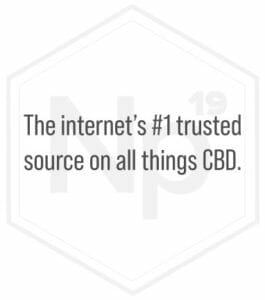WHAT IS CANNABIVARIN (CBV)?
Cannabivarin (CBV), is the second most occurring cannabinoid in the cannabis plant. Just like CBD, CBV is a non-psychoactive cannabinoid I.e. it does not get the user high.
Little or nothing is known of when and how CBV was identified. Being a cannabinoid that is oxidized from tetrahydrocannabivarin (THCV), it is said that a drug test on the usage of CBV will detect the use of THC, even though CBV might be more than THC.
One can then draw insights into when CBV was discovered. What most people read in literature is that delta 9 THC was discovered by Raphael Mechoulam at Hebrew University, Israel in the year 1964. THC had been discovered earlier before than in the 1940s by Roger Adams a US chemist.
Cannabivarin is an analog of the popular Cannabinol (CBN) along with the side chain that is shortened by 2 methylene bridges. Cannabivarin is an oxidized product of THCV, THV – tetrahydrocannabivarin. Just like other lesser-known cannabinoids, little is known about CBV due to the lack of adequate research.
CBV is a member of the phytocannabinoids group, which has other cannabinoids like cannabichromene and cannabigerol (CBG). As far as the chemistry of CBV is concerned, CBV has no double bond isomers or stereoisomer.
Even though scientists have been able to identify more than 120 phytocannabinoids, there is still limited knowledge of CBV and its future use. To determine the potential use of CBV, we need more research on cannabinoids as a whole.
Although the research on the use of marijuana and phytocannabinoid especially THC is ongoing, many other cannabinoids like CBV are yet to be thoroughly studied.
HOW DOES CBV WORK?
Scientists are yet to determine how cannabidivarin works, but preliminary research explains how phytocannabinoids as a group impact the body. Phytocannabinoids seem to affect the Endocannabinoid System (ECS) of the body.
Endocannabinoids are naturally produced by the body to help regulate the body’s system and function. Studies reveal that phytocannabinoids can stimulate the ECS and send signals to targetted parts of the body to address certain health conditions.
Related: CBD vs CBN
This means plant-derived cannabinoids can mimic the functions of the endocannabinoids produced by the body.
POSSIBLE THERAPEUTIC BENEFITS
The possible pharmaceutical use of CBV is not yet known still due to the lack of research, but this does not indicate it doesn’t have any.
Since it is a cannabinoid, it might be potentially used in reducing vomiting and nausea, improving sleep, treating brain tumors, mood disorders, multiple sclerosis, neuropathic pain, and increasing sexual desire.
INTERESTING FACTS
CBV has a similar structure to cannabinol (CBN) and many other phytocannabinoids.
A drug test on the usage of CBV will detect the use of THC, even though CBV might be more than THC

References
Campos AC, Fogaça MV, Scarante FF, Joca SRL, Sales AJ, Gomes FV, et al. Plastic and neuroprotective mechanisms involved in the therapeutic effects of cannabidiol in psychiatric disorders.
Pivik RT, Zarcone V, Dement WC, Hollister LE. Delta-9- tetrahydrocannabinol, and synhexl: effects on human sleep patterns. Clin Pharmacol Ther. 1972;13(3):426–35.
Sabrina Change, Male-female differences in the effects of cannabinoids on sexual behavior, and gonadal hormone function. B
Back to List of Cannabinoids











